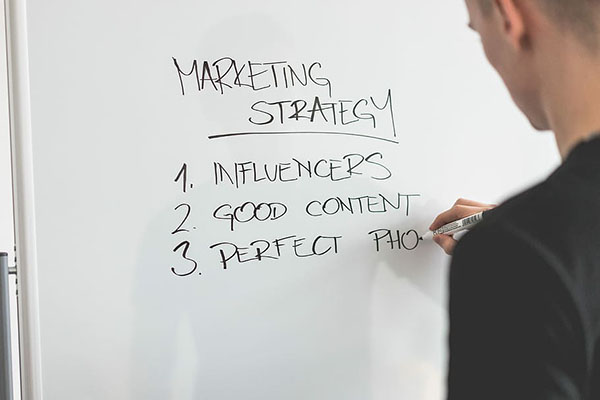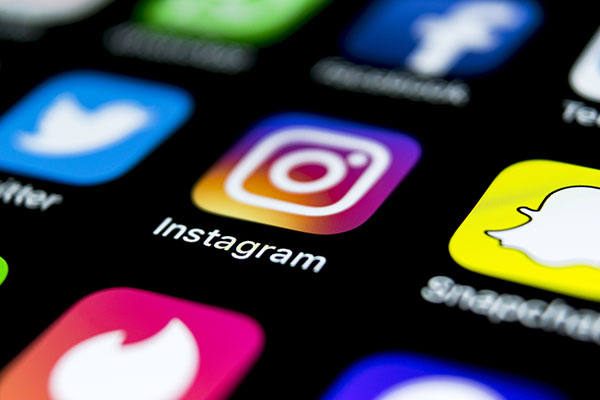Why You Need A Marketing Brief
by Gordon lake
A business trying to succeed without a marketing brief is like a doctor making a diagnosis without lab tests, a daycare center hiring without background checks, a country fighting a war without spy planes, or a Christian trying to get to heaven without a Bible. These things may be doable but not recommended.
What is a Marketing Brief?

A marketing brief is simply a collection of information needed to achieve your marketing objectives. It contains data on your business, your customer base, your competitors, the marketplace you operate in, the vendors, suppliers, tools and technologies you may need, your budgets, your goals and objectives, etc… A marketing brief can not only provide the right answers, but it can also empower you with the intelligence needed to ask the right questions.
Armed with a marketing brief you can develop strategies that deploy the tactics best suited for your business, taking into consideration your objectives, budget, competitors, customers, market environment, and your unique selling proposition. A marketing brief is not a generic list of tactics based on recommendations from self-serving vendors. It’s an intelligence brief specific to your business.
Without a marketing brief, you won’t know what you need to do to create maintain a direct relationship with your potential customers, which means eventually you’ll have to pay those who do have customer relationships, just for the privilege to pitch to those customers. You’re already doing that if you’re handing over money to Google, Facebook, Amazon, HomeAdvisor, Zillow, Yelp, or any other entity that stands between your and your potential customers.
Strategy vs. Tactics

You cannot develop a marketing strategy without a marketing brief. And without a strategy, your marketing efforts are nothing more than a series of tactics. The blood in the water moment is when you realize that your biggest competitor doesn’t have a strategy for winning. The ‘Oh Shit’ moment is when you realize that you don’t either.
In the past, certain sectors of small business have been able to survive without strategies. Because in those sectors, all you needed to succeed in marketing was a handful of tactics. You could advertise in the newspaper, on TV, on the radio, in the Yellow Pages, etc… Those were tactics whose effectiveness was predictable and didn’t change much over time. Even today, you see small businesses treating marketing as a set of tactics when they talk about doing Google ads, Facebook ads, blog articles and posting on social media. For many of those businesses, their tactics are their strategy.
2500 years ago, a Chinese general wrote, “Strategy without tactics is the slowest route to victory. Tactics without strategy is the noise before defeat”. A strategy is a game plan to achieve your goals. tactics are the tools used to carry out that strategy.
When a company attempts to achieve its goals in today’s market with tactics only. It looks something like this:
Goal: Increase customer acquisition rate
Method: Spend $3,000 a month on Facebook ads targeting desired demographics.
A competing company with a strategy could look like something like this:
Goal: Increase customer acquisition rate
Strategy: Create Facebook ads pointing back to the website. When a potential customer clicks on the link in the ad, they will arrive on our website where we will track what pages they visit. If they click on a ‘product detail’ but do not purchase the product, we will use display ads to show them that product over and over again when they visit other websites for the next 30 days. If we were able to collect their email address when they visited the website, within a couple of days, we will email them a10% off coupon for the product they looked at, but didn’t buy. A week after that, we will run a video Facebook ad targeting all website visitors who looked at that product. The video ad will show a customer using the product and giving a testimonial. We believe this strategy has a strong chance of success because our marketing brief contains research information that states on average, a person looks at a product about seven times before making a purchase. In the B2B space, customers will read on average 13 pieces of content before making a buying decision. The tactics will include Facebook image ads, Google retargeting, display ads, Google analysis, and other tracking tools. It will also include Facebook video ads for retargeting.
For the first company that uses tactics only, if the Facebook ads didn’t increase customer acquisition, they would surmise that Facebook ads don’t work and switch to another tactic. for the second company with the strategy, if customer acquisition wasn’t working, they would be able to pinpoint what part of the process wasn’t working, and with the help of the marketing brief, make adjustments and redeploy tactics with a measurement system in place to accurately see the results.
The bottom line, if you’re just deploying tactics, it probably won’t work. And if you’re trying to create a strategy without some sort of marketing brief, it won’t work either. You need all three, accurate data (your marketing brief), a strategy based on accurate data, and a set of tactics optimized to carry out the strategy. You then match the outcome with your goals, tweak and repeat until the outcome and your goals are in perfect sync.
Good Buying Decisions

Marketing requires you to purchase a good number of products and services. It’s not the job of the people representing those products and services to advise you on what is in your best interest. It is their job to convince you that the products and services they represent are in your best interest.
A marketing brief not only empowers you with the knowledge of what’s in your best interest, but it also helps you choose which products, services, vendors, platforms, and suppliers are the best fit for achieving your marketing goals and objectives. It’s hard to scam a company that has a marketing brief.
Organic Reach

Organic reach is the number of people on a given platform who see your content without you having to pay the platform for that exposure. The level of your organic reach is based on the platform’s algorithm, which changes constantly. A marketing brief allows you to keep up with those changes, thereby maximizing your organic reach. Lack of a marketing brief robs you of this necessary information, thereby diminishing your organic reach, often to the point of it having no measurable value at all.
Bottom line, without a marketing brief, most of the efforts you’re putting into obtaining free exposure is probably a waste of time.
Complacency

There are companies out there that are doing just fine without a marketing brief or a strategy. They have a set of tactics they’ve been deploying for years, and those tactics serve them well. Their brand has a good reputation and word of mouth, providing them with more business than they know what to do it.
These businesses survived and may have even prospered during the rise of the Internet. These businesses survived and may have even prospered during the rise of 4G. But 5G is upon us and it’s different. As a small business, you are more vulnerable to 5G than anything that has come before it. And you don’t want 5G to end up being the hill you die on.
When the internet took off, it brought you Google, Facebook, and Netflix. Those platforms help take out many newspapers, magazines and TV movies.
When 4G came along, some thought it was cool that you could get high-speed internet on a mobile phone. But it brought with it Amazon, Uber, Zillow, HomeAdvisor, Airbnb, Expedia, Grub Hub, Carmax, and Waze. Taking out many retail stores, taxis, real estate agencies, home service providers, hotels, booking agencies, and car dealerships.
Both of these innovations, the Internet and 4G, were massive disruptors in the way the world works, and probably wiped out as many businesses as those innovations help create. But 5G is different. 5G will allow for self-driving cars, robotic surgeries, sensors that can detect crime being committed anywhere in a city, and billboards that can show ads specific to you as you pass by. Most tactics used today will not work in a 5G world, and businesses that have relied on handshakes and word-of-mouth may go the way of the door-to-door salesman.
5G Strategy

A marketing brief can prepare you for 5G. 5G as a conduit for Artificial Intelligence will pick the winners for the customers. which means the customer will always be presented the best choice for that customer. Not the top three choices, the best choice. And if your business is not the best choice, it may not survive.
The good news is that every customer is different. So for one customer, the best choice is the cheapest, for another, the best choice is the highest quality, and for someone else, the best choice could be the best overall value. The bad news is that it still means only a handful of businesses will have enough market share to survive, and you won’t be able to game the system or even buy your way to the front of the line.
The really bad news is that even though 5G is just starting to be implemented, Artificial Intelligence systems are already picking winners and losers. For those systems, your SEO efforts don’t matter. They can filter your reviews and customer acquisition patterns. If you have a physical location, those systems can measure your foot traffic by monitoring location data from your customers’ mobile devices.
A 5G strategy might include you putting customer testimonial videos on your active social media channels three times a week, or seeding news publication sites with articles of your business in relation to a trending topic. The bottom line is, a 5G strategy will have you populating the internet with as many positive data points about your brand as you possibly can, including price, value, quality, and for some businesses, availability, convenience or popularity. A marketing brief provides you the data to understand how 5G will affect your business and what you can do to take advantage of the opportunities it presents while preparing for the challenges that are sure to come.
Conclusion

Your marketing brief is a representation of your company’s marketing knowledge. If you have a collection of information that you use to build a marketing strategy for achieving your goals and objectives, then you have a marketing brief. You may not call it that, you may not give it a name at all, and it may not be very comprehensive, accurate or up to date. But it’s your marketing brief. It’s your marketing knowledge.
If you don’t have a marketing brief, but you rely on the direction from your Google Rep, or Agency Rep, or SEO provider, or your Web Designer, or some other outside source, you hope that while they’re looking out for what’s in the best interest of their company, it won’t be to the detriment of what’s in your best interest. Keep in mind, the advice Google is giving you is the same advice they’re giving your competitors.
As the editor of Village Briefing, I have a front-row seat to the effects the ever-changing marketplaces having on small businesses. And I strongly believe that businesses without solid, accurate marketing briefs will have little chance of surviving in an upcoming 5G world.
Even today, I see businesses draining their marketing budgets chasing a dwindling customer pool, at an increasingly higher acquisition cost. I see technology platforms attracting massive numbers of potential customers, then charging businesses high fees for access to those customers, or worse, forcing businesses to bid against each other for the opportunity to pitch to customers with no guarantee of conversion. I see businesses jumping from one popular tactic to another with little or no success, never understanding that a tactic is only as good as the strategy that drives it.
And the solution is so simple. Do a marketing brief. You can do it yourself without having to hire outside assistance. I created the Village Briefing Marketing Brief Guide, that takes you step-by-step in the in-house creation of a state of the art marketing brief. It’s a free online guide with more than 60 reference articles of some of the best information out there related to small business marketing.
There’s nothing to download, nothing to sign up for, I don’t capture your email address, no popups, just a free guide on a single web page.
To create this guide, I comb through more than 4,000 articles on Village Briefing, and because the market is constantly changing, I’m constantly updating the guide. Even if you’re not putting together a comprehensive marketing brief, it’s a good page to bookmark as a reference.
We’re quickly moving toward a world where there are no more bad products, no more bad services, and no more bad customer experiences. Car crashes will be as rare as plane crashes. Every question you ask you will get an answer from the watch or device you have on you. Your vital signs will be monitored 24/7, and every relevant data about you, be it your food preference, dress size, or spending limit, will be accessible to every place you walk into.
This is a world that is already starting to come into focus. The question is where does your business fit in such a world, and what are your marketing plans for it?